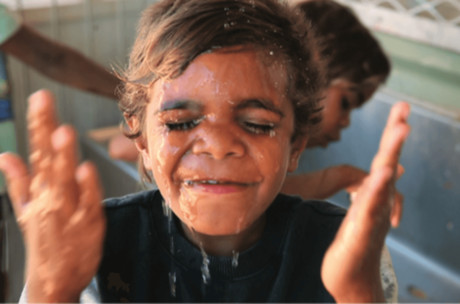Inequality in Aboriginal child ICU admissions for invasive infections

Intensive care unit (ICU) admission rates for life-threatening infections in Indigenous children are several times higher than those of non-Indigenous children, and twice as many Indigenous children per population succumb to these severe infections despite life support, according to research published online by the Medical Journal of Australia.
The research team, led by paediatric intensivist Associate Professor Luregn Schlapbach (Lady Cilento Children’s Hospital and Mater Research Institute, University of Queensland, Brisbane) and including participants from each mainland state capital, analysed data for the 82,750 children (aged 16 or less) admitted to an ICU during 2002–2013, including 4864 Indigenous children.
The study focused on the most severe infections, including sepsis, pneumonia and other invasive infections requiring life support in an ICU. These infections were the single most common reason for admission of Indigenous children to an ICU, accounting for 23.0% of non-elective admissions.
The number of ICU deaths caused by these life-threatening infections was more than twice as high for Indigenous as for non-Indigenous children (2.67 v 1.04 per 100 000 per year; crude incidence rate ratio, 2.65; P < 0.001).
Staphylococcus aureus was the leading pathogen identified in children with sepsis or septic shock, and Indigenous children were more than seven times more likely to suffer from life-threatening infections with this bacterium (incidence, 4.42 per 100,000 Indigenous children per year v 0.57 per 100,000 non-Indigenous children per year; risk ratio 7.7; P < 0.001).
In the past decade, sepsis and other life-threatening infections in children have been the focus of campaigns to improve childhood survival in Australia and around the world. Despite progress, this study shows that there remains major differences between Indigenous and non-Indigenous children with respect to these infections.
“Children of Aboriginal and Torres Strait Islander background were three times more likely to be admitted to an ICU for severe infections than non-Indigenous children during 2002–2013, and the population-based mortality attributable to infections in Indigenous children was more than twice that for non-Indigenous children,” the authors wrote.
“Our study highlights an important area of inequality in health care for Indigenous children that requires urgent attention. Further research is needed to define risk factors and to develop and assess appropriately targeted interventions.”
In an accompanying editorial, Associate Professor Pamela Palasanthiran from the Sydney Children’s Hospital Network, and Dr Asha Bowen, from Princess Margaret Hospital for Children and the Telethon Kids Institute in Perth, wrote that the high incidence in Indigenous children of impetigo, in which co-infection with S. aureus and Streptococcus pyogenes is common, which can lead to complications, such as sepsis, if untreated.
“As a staphylococcal vaccine is not likely to be available in the near future, efforts for improving outcomes for Indigenous Australian children should focus on reducing S. aureus transmission, detecting and treating superficial S. aureus infections, and accelerating clinical trials of adjunctive treatment for S. aureus, each from as early in life as possible,” they wrote.
Source: The Medical Journal of Australia — a publication of the Australian Medical Association.
A Day in the Life of a mobile optometrist
Linda Nguyen is the owner and founder of mobile optometrist practice Care Optometry and was a...
Using social prescribing as 'a script against loneliness'
The Royal Australian College of GPs is supporting social prescribing as a health intervention...
Raising 'tech neck' awareness this Spinal Health Week
For Spinal Health Week, 26 May–1 June, the Australian Chiropractors Association has...



![[New Zealand] Transform from Security Awareness to a Security Culture: A Vital Shift for SMB Healthcare — Webinar](https://d1v1e13ebw3o15.cloudfront.net/data/89856/wfmedia_thumb/..jpg)
![[Australia] Transform from Security Awareness to a Security Culture: A Vital Shift for SMB Healthcare — Webinar](https://d1v1e13ebw3o15.cloudfront.net/data/89855/wfmedia_thumb/..jpg)




